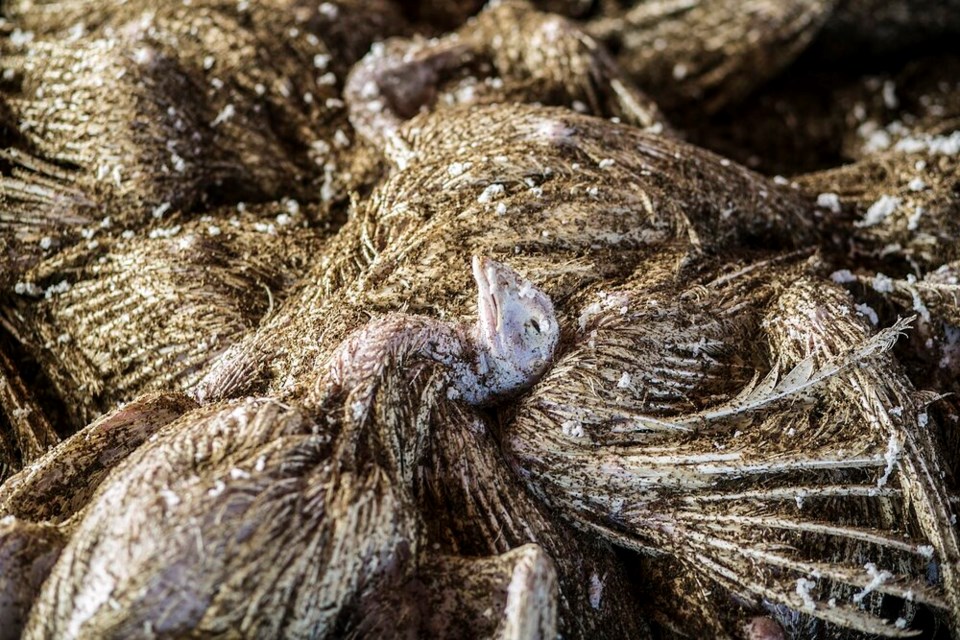As avian influenza continues to march across North America, highly pathogenic strains of the virus have killed or led to the culling of nearly 1.4 million birds across nearly every Canadian province.
In the United States, that number climbed to over 35 million animals by April 28.
“We’re extremely concerned about the situation right now,” said Camille Labchuk, lawyer and executive director of the Canadian legal advocacy group Animal Justice.
“At this point, 1.4 million birds are going to be gassed, suffocated to death or have their neck broken, all without oversight like you’d have at a slaughterhouse.”
Mary-Jane Ireland, Chief Veterinary Officer for the Canadian Food and Inspection Agency (CFIA), told Glacier Media that mortality is high for the virus but that every bird that doesn’t die is “humanely euthanized and disposed of to prevent spread of the disease.”
Concerns over avian flu go beyond animal welfare — the group of viruses threaten food prices, wild waterfowl populations and even human health.
Glacier Media spoke with biologists, government agencies, industry groups and animal welfare advocates to understand what’s at stake.
Here’s what you need to know.
How has B.C. been affected by avian flu so far?
The CFIA has confirmed positive cases of the so-called “bird flu” in three B.C. domestic flocks. High-pathogenic strains (HPAI) — the most deadly variety — have been identified in all cases.
A commercial poultry farm north of Enderby, B.C., was placed under quarantine last week after the contagious bird flu was detected in its animals. Another outbreak was confirmed Monday at a backyard poultry flock in Kelowna. The discovery prompted the agency and B.C.’s Ministry of Agriculture and Food to warn poultry producers within a 12-kilometre radius of the infected flock.
“Everybody is concerned. We are at our highest biosecurity level, which is red. And we are trying to protect our flocks,” said BC Egg Marketing Board spokesperson Amanda Brittain.
In the latest outbreak, Burton, B.C., farmer Peggy Ife told CBC News she had lost 80 per cent of her flock after 70 chickens dropped dead in what she suspects is due to bird flu. Ife said CFIA inspectors visited her farm Monday to take samples.
CFIA confirmed an outbreak on April 27 in a small flock in the Regional District of Central Kootenay. It's unclear whether the confirmed outbreak is among Ife's flock.
The B.C. Minister of Agriculture and Food has warned owners of backyard flocks to remain “vigilant” and reduce or eliminate encounters with wild birds and humans. It also recommended owners ramp up the disinfection of clothing and footwear.
“Peggy lives two or three kilometres from me,” said Forest McCormack, who runs the fourth-generation McCormack Farm. “I can lock my birds up and follow all these protocols. At the end of the day, it’s not a sealed medical facility.
“It’s one of those situations where you just have to overcome as a farmer.”
And in Delta, a recent sample from a bald eagle tested positive for HPAI. It’s the second eagle to test positive since February this year when one was found in Vancouver.
The province said Friday that seven wild birds that died between April 20 and 27 have also tested positive for H5 strains of avian influenza. That includes “three snow geese and one Canada goose in the Vanderhoof area, and individual bald eagles from Lac la Hache (near 100 Mile House), Bowen Island and Vancouver,” noted a provincial bulletin.
Where does avian flu come from?
Bird flu has been around for thousands of years. Scientists have isolated variants of the influenza virus in more than 100 wild bird species worldwide, from waterfowl like geese, swans, ducks and gulls to shoreline species like sandpipers, plovers and storks.
Much like a phylogenetic tree of primate evolution, scientists have used genetic sequencing of avian flu to reveal two families evolving independently — one in North America and one in Asia, explains Ronald Ydenberg, a professor of behavioural ecology and director of Simon Fraser University’s Centre for Wildlife Ecology.
Today, there are over 100 variations of the virus. But in the same way that many humans pull through an annual bout of the flu, many strains of the avian varieties rarely cause more than the sniffles, lethargy or fever in birds.
In China, where more poultry is reared than in any other part of the world, research points to the southern part of the country as an “epicentre for the generation of new avian influenza strains.” Here, large populations of wild waterfowl and domestic birds live within close range.
Ydenberg likens the spread of avian flu to cholera in human populations. Cholera never truly disappears from the planet, and in a humanitarian disaster, it often flairs up in refugee camps where people live in tight quarters with limited sanitation.
Ydenberg notes that poultry farms are the epidemiological equivalent of a refugee camp for birds.
“On a poultry farm, you have an endless supply of new hosts… It doesn't matter if you kill your host quickly because you can quickly infect many other new hosts," Ydenberg said as he drove out to Delta to check in on the annual sandpiper migration.
“There are thousands of birds there. They're all immunologically naive. They haven't had time to evolve any resistance. And there's a fresh batch every six weeks.”
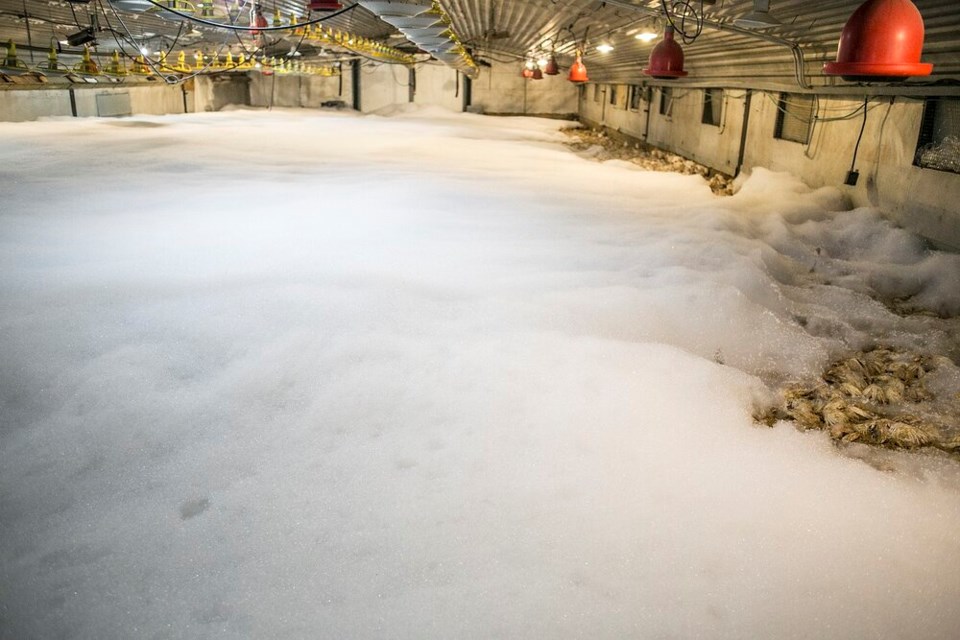
How does avian flu spread?
The viruses that cause avian flu can be shed through a bird’s saliva, feces and nasal secretions. If an infected animal sheds into a pond, near a bird feeder or in a cramped barn, it can easily pass on to another individual — whether wild or domestic.
Some jurisdictions have recommended that residents take down bird feeders and farmers roll out strict biological screening of new animals on a farm.
The virus can easily move in the other direction, from domestic to wild animals, says Ydenberg.
Picture a migratory bird on a pond next to a poultry barn, he said.
“The poultry barn has got big fans that are blowing air out. It will be blowing trillions of virus particles out along with all that air,” he said.
If a high-pathogenic strain is in that air and lands on the pond, a wild bird can get infected and carry it to a healthy flock.
People's daily patterns are a problem too. The viruses can be passed through contaminated surfaces, such as the boot of a farmer or a feeding trough, according to the U.S. Centers for Disease Control and Prevention (CDC).
“Fomites,” inanimate objects that can transmit an infectious organism, are another common transmission source.
A garbage truck, clothing, truck tires can all play this role — meaning a less-than-cautious veterinarian or garbage truck driver can carry a strain of virus from one farm to the next.
“That's by far the more likely route than that migratory birds,” said Ydenberg.
Avian flu has also been known to cross borders and species with devastating consequences.
In 2001, an outbreak in Nigeria was traced back to egg exports from Southeast Asia.
“There's been epidemics of avian flu in seals… [it] killed a lot of seals in Cape Cod back in the 1980s,” said Ydenberg.
“Like any virus, it can jump to other species under certain circumstances.”
What are avian flu symptoms in birds?
A duck can get a runny nose, but odds are its waterfowl cousins will get hit harder by avian flu.
Ydenberg says that’s probably due to their long evolutionary history with the viruses.
From chickens and chicks to turkeys and turkelings, the so-called immunologically naive domestic flocks don’t have that protection, leading poultry farmers and scientists to keep a close eye on the nuances of avian flu strains.
Along with organizations like the CFIA, the poultry industry divides avian flu into two categories: low pathogenic avian influenza (LPAI) and high pathogenic avian influenza (HPAI).
Low-pathogenic viruses, which account for most avian flu viruses, can lead to everything from asymptomatic cases to ruffled feathers and a drop in egg production, according to the CDC.
“They'd have a drippy nose. They might not feel very well,” said Ydenberg. “It is running a fever, and it's loaded with virus.”
Strains considered low-pathogenic can, however, mutate.
On the high-pathogenic end, such mutations can lead to rapidly deteriorating symptoms, affecting multiple internal organs and leading to mortality rates up to 90 to 100 per cent in chickens, often within 48 hours, according to the CDC.
The CFIA says that current incubation rates for high-pathogenic avian influenza range from two to 14 days.
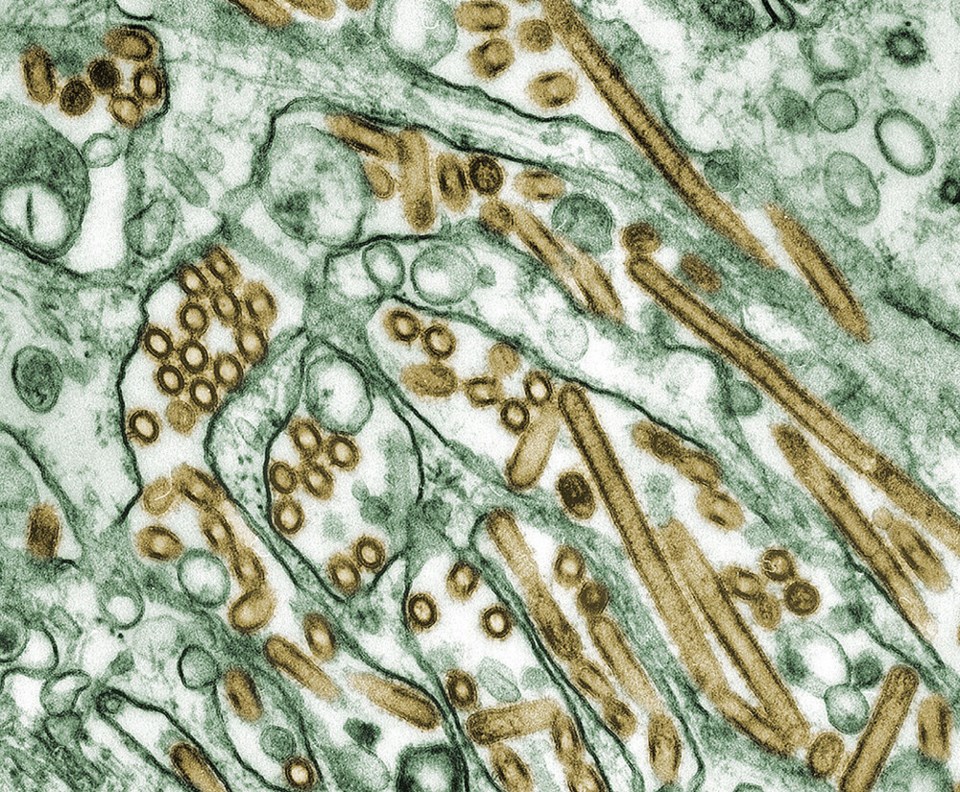
How likely is it that a human gets infected with avian flu?
On Thursday, the Colorado state health authorities announced the first human case of avian flu in the United States.
The man, described as younger than 40, worked on a farm with infected poultry as part of a pre-release employment program at a state correctional facility.
So far, he has only reported one symptom — fatigue — and remains in isolation where he's taking Tamiflu.
The state health authorities said no other known avian flu cases are spreading among people, and no other human cases have been confirmed in the U.S.
In the United Kingdom, public health officials confirmed one asymptomatic human case of the H5N1 avian flu strain in January 2022. The person had also had direct contact with birds.
As the BC Centre for Disease Control (BCCDC) put it: there have been a rare number of cases of avian flu in humans, “most often in people who had close unprotected contact with infected poultry or environments heavily contaminated with the virus.”
Human infection usually occurs when birds shed the virus through their saliva, mucous and feces into a person’s eyes, nose and mouth or it is inhaled into the throat and lungs, according to the U.S. CDC.
“There is no evidence that the disease can be spread to people through properly prepared and thoroughly cooked food,” notes the World Health Organization (WHO).
Worldwide, Asian origin strains H7N9 and H5N1 have been responsible for human cases, with the most serious symptoms and illnesses leading to death.
As of September 2018, two human cases of H7N9 have been identified in Canada — both in B.C. and both travel-related. They fully recovered.
Only one human case of highly pathogenic Asian H5N1 has been identified in Canada. The woman, who was in her late 20s when she flew back from Beijing to Edmonton in 2014, became ill very quickly and died soon after, according to the WHO.
Human to human transmission is rare, and if it does occur, it only spread to a few close contacts.
Likely human to human transmission of avian flu has been traced to infections in Hong Kong in 1997, 2003 in the Netherlands, 2004 in Thailand, 2005 and 2006 in Indonesia, 2007 in Pakistan, and 2007 and 2013 in China, among others.
All the cases spread no more than one or two times before reaching a “dead-end transmission,” notes the CDC.
“However, because of the possibility that bird flu viruses could change and gain the ability to spread easily between people, monitoring for human infection and person-to-person spread is extremely important for public health,” according to the CDC.
What are human symptoms of avian flu?
At the low end, bird flu symptoms in humans include conjunctivitis, where a patient has red eyes and discharge. Symptoms can progress like the normal flu, with fever, sore throat, and muscle aches.
Other symptoms can include abdominal pain, chest pain and diarrhea.
As the infection grows, it can lead to severe respiratory illness, including difficulty breathing, pneumonia and Acute Respiratory Distress Syndrome, where the lungs fill with fluid.
Neurologic changes, like altered mental status or seizures, can also appear in some cases.
An estimated 60 per cent of those who get infected with H5N1 bird flu die, according to the WHO.
How dangerous is the avian flu?
Ducks, geese, gulls, terns and swans are natural hosts of all influenza A subtypes, and in the wild, they rarely die from the virus, according to the BC Centre for Disease Control.
The viruses are usually grouped into low- and high-pathogenic varieties. At the low end, they show “little or no signs of illness in infected poultry”; at the high end, the viruses can cause severe illness and death in chickens and turkeys.
Those categories don’t always translate to humans, who aren’t infected easily. When infection does occur, the avian flu virus hasn’t been known to transmit easily.
But all public health bodies and many experts warn the biggest threat to humans lies in mutation.
Should we be worried about avian flu mutations?
There’s always a potential for low-pathogenic avian flu viruses to evolve into highly-pathogenic viruses. Such a novel virus could emerge with pandemic potential among the human population.
“H5N1 infection in humans can cause severe disease and has a high mortality rate,” states the WHO.
“If the H5N1 virus were to change and become easily transmissible from person to person while retaining its capacity to cause severe disease, the consequences for public health could be very serious.”
Since highly pathogenic Asian bird flu strains emerged worldwide in the past two decades, many were worried H5N1 would jump over to people like the incredibly deadly Spanish Flu a hundred years earlier, said Ydenberg.
But “it just didn’t happen,” he added.
Ydenberg says there is little evidence that this wave will be any different.
“I would say vigilance is required here. But certainly, if I were an average person, I would not worry about this very much.”
How are governments and industry ensuring contaminated eggs and poultry don’t land on my plate?
All avian flu cases must be reported to CFIA. High-pathogenic varieties and low pathogenic H5 and H7 avian flu viruses are then reported to the public.
Any animals found to be infected are culled and disposed of so they don’t make it onto the grocery store shelf or farmer's market.
But even if a contaminated egg or cut of chicken did make it to your kitchen, the virus is sensitive to heat. Food that reaches 70 C in all parts will kill the virus, according to the WHO.
The organization recommends preparing poultry at all times hygienically and ensuring that it’s properly cooked through.
So far, Amanda Brittain of the BC Egg Marketing Board said “there should be zero impact” on food security at this point in B.C.
“There’s no supply issues. People should not be seeing shortages at their grocery store,” she said.
Whether that will change will depend on how many farms are hit by avian influenza. But B.C. can also call on other provinces and U.S. jurisdictions if there are any shortages.
“I can’t say what’s going to happen. Right now, there’s no impact on the supply of chicken, turkey or eggs,” said Brittain.
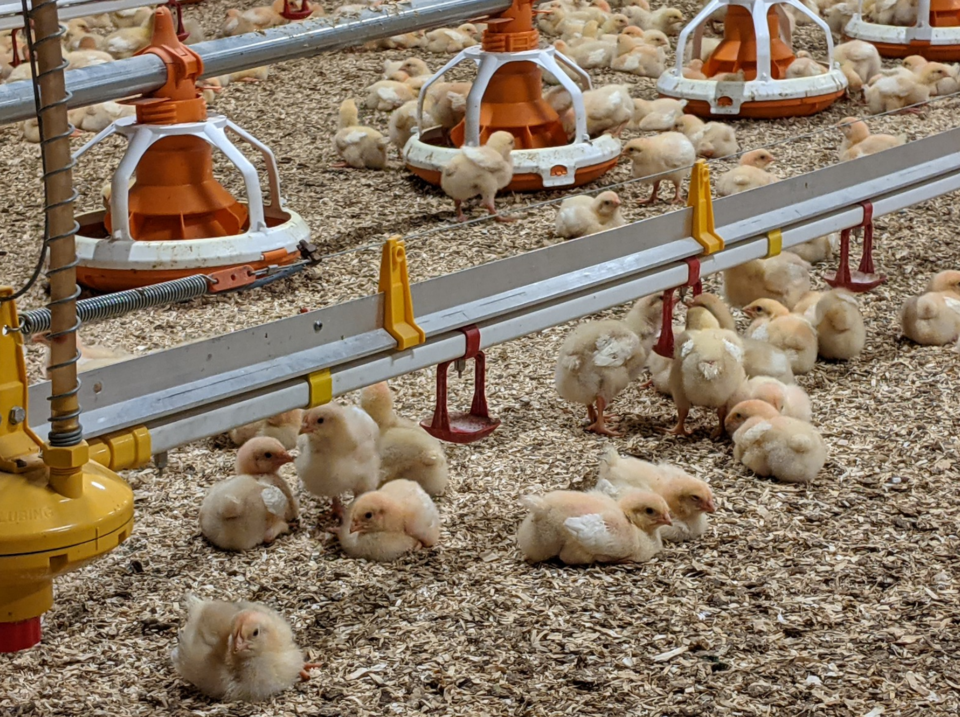
How will avian flu impact food prices?
Avian flu is already devastating poultry farmers across North America. In the United States, bird flu has led to the destruction of one-in-10 eggs and raised the wholesale cost of a dozen eggs by over 208 per cent since the start of the year.
Wider economic factors are also at play. In Canada, inflation has already driven food prices an average of 7.7 per cent higher since last year, the highest spike in 13 years, according to Statistics Canada.
The average price for one kilogram of chicken in Canada rose to $8.04 in February from $7 a year earlier, a nearly 15 per cent jump. Meanwhile, the average retail price for a dozen eggs climbed to $3.87, a 6.9 percent jump.
Poultry is supply-managed in Canada to stabilize prices, but grocers can still charge higher prices to meet consumer demand.
“We don’t control pricing in the grocery store,” said Brittain.
Why is B.C. seeing all these avian flu cases now?
This is far from the first time outbreaks of avian flu have popped up in British Columbia — most recently, outbreaks have occurred in 2014 and 2015.
Previous outbreaks in B.C. and elsewhere in Canada led to the destruction of millions of birds. The most serious was a 2004 outbreak in the Fraser Valley, where the H7N3 strain spread to 42 commercial farms and 11 backyard coops, prompting federal officials to order a cull of about 17 million birds.
The latest wave appears to have first started spreading among domestic birds in eastern Canada. Some have attributed its spread to migrating waterfowl coming into contact with domestic flocks.
“(Avian influenza) is spreading in wild bird populations across the globe and presents a significant national concern as birds migrate to Canada,” notes the CFIA in a web bulletin.
The Canadian Food Inspection Agency said earlier this month that this had been an unprecedented year globally for avian flu. It said it believes migratory birds are responsible for the outbreaks and expects there will be more cases as flocks continue to fly north for the summer.
But others, like SFU’s Ydenberg, say there’s little evidence wild populations should bear the brunt of responsibility for the latest wave of cases.
He warns the public not to take out their anxiety on wild birds in a misguided attempt at lowering their risk, which he says has happened before.
“I would say tens of thousands [of migratory birds] were shot across the world to protect poultry farms,” said Ydenberg. “The CFIA and the poultry industry itself are pointing the finger at migratory birds. But the tracing is really pretty incomplete.”
In his view, highly pathogenic strains evolve in the poultry industry, not in wild systems.
“There's no really strong evidence to connect migratory birds to the spread of this thing,” he said. “That evidence is all circumstantial and powered along by the political and economic implications it has.”
“A garbage truck at poultry farms doesn't want to take an extra 20 minutes after every visit for a thorough disinfection. It's really as simple as that.”
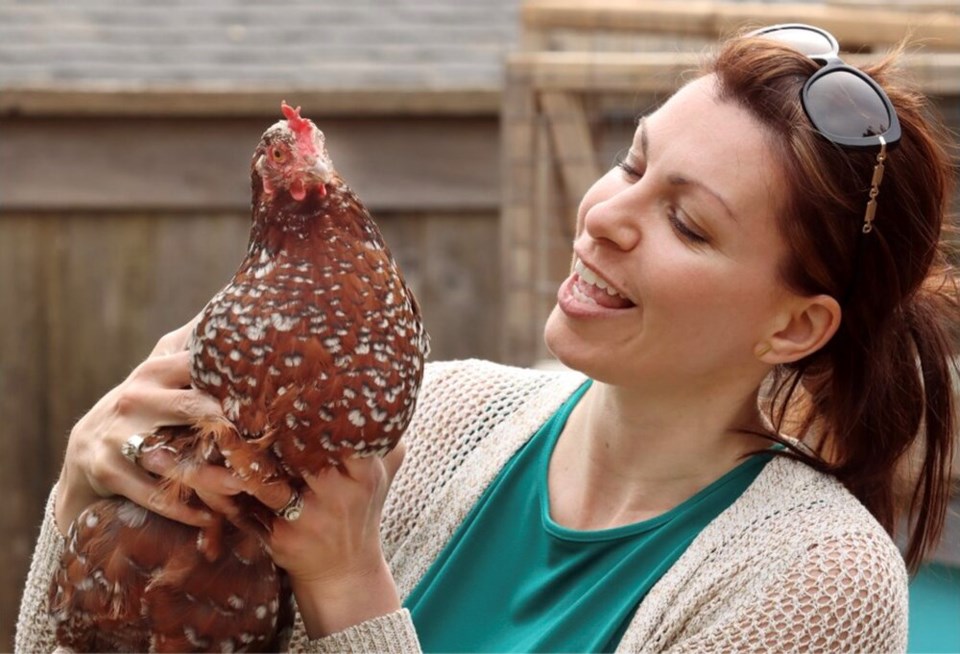
I own a backyard chicken coop and a pet bird. What should I do?
There are five rules of thumb to keep in mind when guarding against infectious diseases in small flocks of poultry and pet birds, according to the CFIA.
Number one, keep your birds and their food and water sources away from wild birds. Don’t wait to clean up spilled feed or litter, and keep everything sealed in containers so it doesn’t get contaminated.
Second, “clean, clean and clean,” says CFIA, pointing to “barns, cages, egg trays, gardening tools, and water and feed containers.”
Don’t borrow anything from other bird owners, and always wash your hands, clothing and boots before and after handling a bird. When they die, dispose of them, their litter and eggs as quickly as possible, says CFIA.
Three, look out for signs of illness, including:
- lack of energy, movement or appetite;
- decreased egg production;
- swelling around the head, neck and eyes;
- coughing, gasping for air or sneezing;
- nervous signs, tremors or lack of coordination;
- diarrhea;
- or sudden death.
Report any suspected cases to your local CFIA office.
Four, don’t let visitors access your birds. If they must, provide a foot bath to wash their feet before leaving and facilities to clean vehicle tires and wheel wells before it leaves the property.
Five, when new birds come into your flock, keep them separated for 30 days to ensure they don’t infect the rest of the animals.
“To date, a large number of human infections with the H5N1 virus have been linked to the home slaughter and subsequent handling of diseased or dead birds prior to cooking,” notes the WHO.
“These practices represent the highest risk of human infection and are the most important to avoid.”
What if I see a sick or dead bird in the wild?
Report all sick or dead wild birds to the Canadian Wildlife Health Cooperative through their online reporting tool or phone at 250-751-3103.
With files from Glen Korstrom and the Canadian Press
